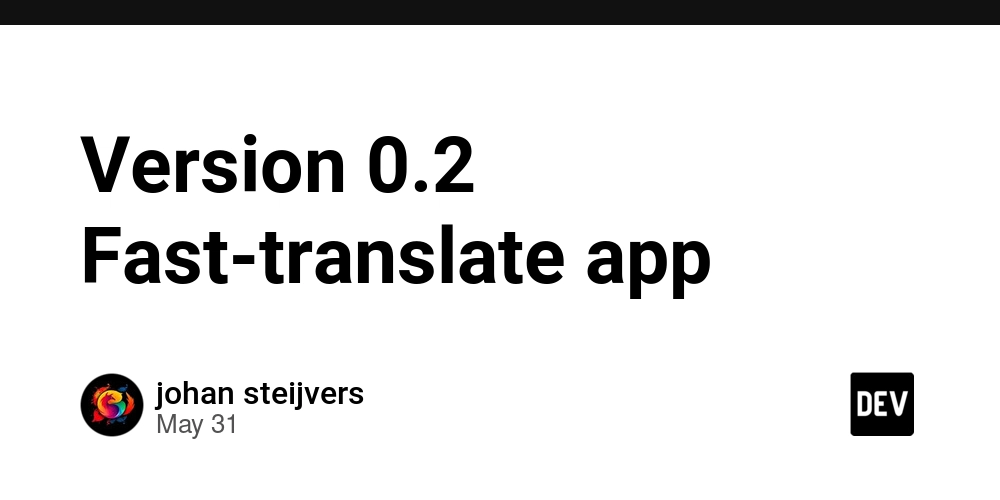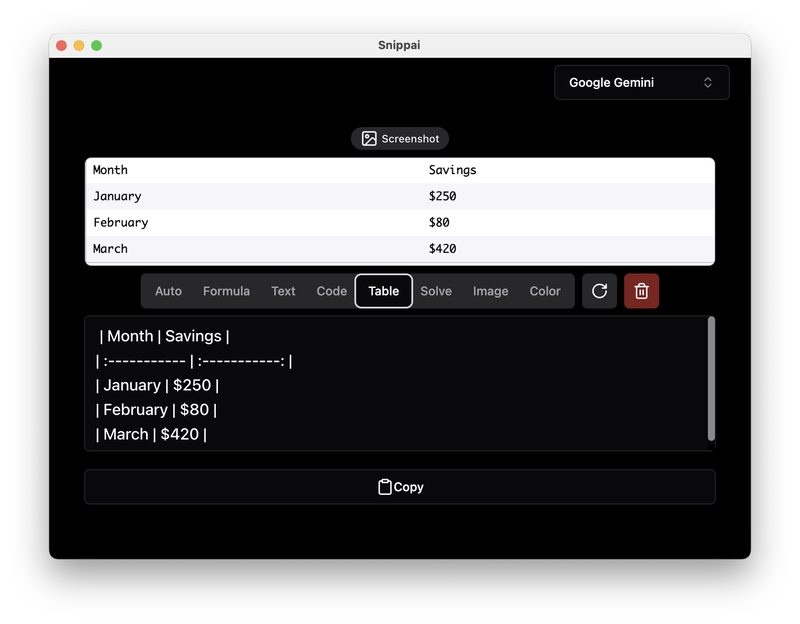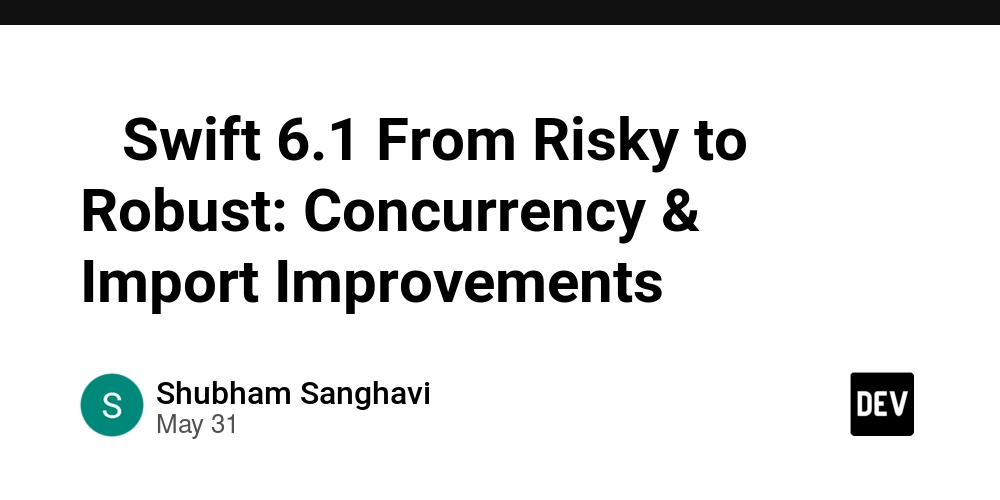Why Java Remains the King of Enterprise Development in 2025
Java has been powering enterprise applications for over two decades, and despite the emergence of newer languages, it continues to dominate the programming landscape. Let's explore why Java remains relevant and how it's evolving to meet modern development needs. The Enduring Popularity of Java According to the latest Stack Overflow Developer Survey, Java consistently ranks among the top 5 most popular programming languages¹. But what makes Java so enduring? 1. Platform Independence Java's "write once, run anywhere" philosophy remains one of its strongest selling points. The Java Virtual Machine (JVM) abstracts away platform-specific details, allowing developers to deploy applications across different operating systems without modification. public class HelloWorld { public static void main(String[] args) { System.out.println("Hello, World!"); // This runs on Windows, macOS, Linux, and more! } } 2. Strong Memory Management Java's automatic garbage collection handles memory management, reducing the risk of memory leaks that plague languages like C++². This feature makes Java particularly attractive for large-scale enterprise applications. 3. Robust Ecosystem The Java ecosystem is vast and mature: Spring Framework: For enterprise application development Maven/Gradle: For build automation JUnit: For testing Hibernate: For database operations Modern Java: Not Your Father's Java Java has evolved significantly with recent releases: Java 17 LTS Features Records: Simplified data classes Text Blocks: Multi-line string literals Pattern Matching: More expressive switch statements // Records - concise data classes public record Person(String name, int age) {} // Text blocks - cleaner multi-line strings String html = """ Hello, Modern Java! """; Performance Improvements Java 21 introduced virtual threads (Project Loom), making concurrent programming more accessible and efficient³. This addresses one of Java's traditional pain points in handling large numbers of concurrent connections. Java in Cloud-Native Development With the rise of microservices and cloud computing, Java has adapted remarkably well: Spring Boot Spring Boot revolutionized Java development by providing: Auto-configuration Embedded servers Production-ready features out of the box GraalVM Native Images GraalVM allows Java applications to compile to native executables, dramatically reducing startup time and memory footprint⁴ - crucial for serverless and containerized environments. Learning Path for Java Developers Beginner Level Core Java syntax and OOP concepts Collections framework Exception handling Basic I/O operations Intermediate Level Generics and lambda expressions Stream API Concurrency utilities JUnit testing Advanced Level JVM internals Performance tuning Design patterns Microservices with Spring Boot The Future of Java Java continues to evolve with a predictable 6-month release cycle, ensuring regular improvements and new features. The upcoming Project Valhalla promises value types, which could significantly improve performance for data-intensive applications⁵. Conclusion Java's combination of stability, performance, and continuous evolution makes it an excellent choice for both beginners and experienced developers. While newer languages offer compelling features, Java's mature ecosystem and enterprise adoption ensure its relevance for years to come. Whether you're building web applications, mobile backends, or enterprise systems, Java provides the tools and reliability you need to succeed in modern software development. Tags java programming enterprise development References Stack Overflow Developer Survey 2024. Available at: https://survey.stackoverflow.co/2024/ Oracle. (2024). "Java Memory Management and Garbage Collection". Oracle Documentation. OpenJDK. (2023). "JEP 444: Virtual Threads". Available at: https://openjdk.org/jeps/444 Oracle. (2024). "GraalVM Native Image". Available at: https://www.graalvm.org/native-image/ OpenJDK. (2024). "Project Valhalla". Available at: https://openjdk.org/projects/valhalla/ Follow me for more programming insights and Java tutorials!

Java has been powering enterprise applications for over two decades, and despite the emergence of newer languages, it continues to dominate the programming landscape. Let's explore why Java remains relevant and how it's evolving to meet modern development needs.
The Enduring Popularity of Java
According to the latest Stack Overflow Developer Survey, Java consistently ranks among the top 5 most popular programming languages¹. But what makes Java so enduring?
1. Platform Independence
Java's "write once, run anywhere" philosophy remains one of its strongest selling points. The Java Virtual Machine (JVM) abstracts away platform-specific details, allowing developers to deploy applications across different operating systems without modification.
public class HelloWorld {
public static void main(String[] args) {
System.out.println("Hello, World!");
// This runs on Windows, macOS, Linux, and more!
}
}
2. Strong Memory Management
Java's automatic garbage collection handles memory management, reducing the risk of memory leaks that plague languages like C++². This feature makes Java particularly attractive for large-scale enterprise applications.
3. Robust Ecosystem
The Java ecosystem is vast and mature:
- Spring Framework: For enterprise application development
- Maven/Gradle: For build automation
- JUnit: For testing
- Hibernate: For database operations
Modern Java: Not Your Father's Java
Java has evolved significantly with recent releases:
Java 17 LTS Features
- Records: Simplified data classes
- Text Blocks: Multi-line string literals
- Pattern Matching: More expressive switch statements
// Records - concise data classes
public record Person(String name, int age) {}
// Text blocks - cleaner multi-line strings
String html = """
Hello, Modern Java!
""";
Performance Improvements
Java 21 introduced virtual threads (Project Loom), making concurrent programming more accessible and efficient³. This addresses one of Java's traditional pain points in handling large numbers of concurrent connections.
Java in Cloud-Native Development
With the rise of microservices and cloud computing, Java has adapted remarkably well:
Spring Boot
Spring Boot revolutionized Java development by providing:
- Auto-configuration
- Embedded servers
- Production-ready features out of the box
GraalVM Native Images
GraalVM allows Java applications to compile to native executables, dramatically reducing startup time and memory footprint⁴ - crucial for serverless and containerized environments.
Learning Path for Java Developers
Beginner Level
- Core Java syntax and OOP concepts
- Collections framework
- Exception handling
- Basic I/O operations
Intermediate Level
- Generics and lambda expressions
- Stream API
- Concurrency utilities
- JUnit testing
Advanced Level
- JVM internals
- Performance tuning
- Design patterns
- Microservices with Spring Boot
The Future of Java
Java continues to evolve with a predictable 6-month release cycle, ensuring regular improvements and new features. The upcoming Project Valhalla promises value types, which could significantly improve performance for data-intensive applications⁵.
Conclusion
Java's combination of stability, performance, and continuous evolution makes it an excellent choice for both beginners and experienced developers. While newer languages offer compelling features, Java's mature ecosystem and enterprise adoption ensure its relevance for years to come.
Whether you're building web applications, mobile backends, or enterprise systems, Java provides the tools and reliability you need to succeed in modern software development.
Tags
java programming enterprise development
References
- Stack Overflow Developer Survey 2024. Available at: https://survey.stackoverflow.co/2024/
- Oracle. (2024). "Java Memory Management and Garbage Collection". Oracle Documentation.
- OpenJDK. (2023). "JEP 444: Virtual Threads". Available at: https://openjdk.org/jeps/444
- Oracle. (2024). "GraalVM Native Image". Available at: https://www.graalvm.org/native-image/
- OpenJDK. (2024). "Project Valhalla". Available at: https://openjdk.org/projects/valhalla/
Follow me for more programming insights and Java tutorials!














































































































































































![[The AI Show Episode 150]: AI Answers: AI Roadmaps, Which Tools to Use, Making the Case for AI, Training, and Building GPTs](https://www.marketingaiinstitute.com/hubfs/ep%20150%20cover.png)
![[The AI Show Episode 149]: Google I/O, Claude 4, White Collar Jobs Automated in 5 Years, Jony Ive Joins OpenAI, and AI’s Impact on the Environment](https://www.marketingaiinstitute.com/hubfs/ep%20149%20cover.png)


























































































































![[FREE EBOOKS] Solutions Architect’s Handbook, The Embedded Linux Security Handbook & Four More Best Selling Titles](https://www.javacodegeeks.com/wp-content/uploads/2012/12/jcg-logo.jpg)




![How to Survive in Tech When Everything's Changing w/ 21-year Veteran Dev Joe Attardi [Podcast #174]](https://cdn.hashnode.com/res/hashnode/image/upload/v1748483423794/0848ad8d-1381-474f-94ea-a196ad4723a4.png?#)







































































































































_ArtemisDiana_Alamy.jpg?width=1280&auto=webp&quality=80&disable=upscale#)











































































































![Sonos Father's Day Sale: Save Up to 26% on Arc Ultra, Ace, Move 2, and More [Deal]](https://www.iclarified.com/images/news/97469/97469/97469-640.jpg)


![Apple 15-inch M4 MacBook Air On Sale for $1023.86 [Lowest Price Ever]](https://www.iclarified.com/images/news/97468/97468/97468-640.jpg)
































































